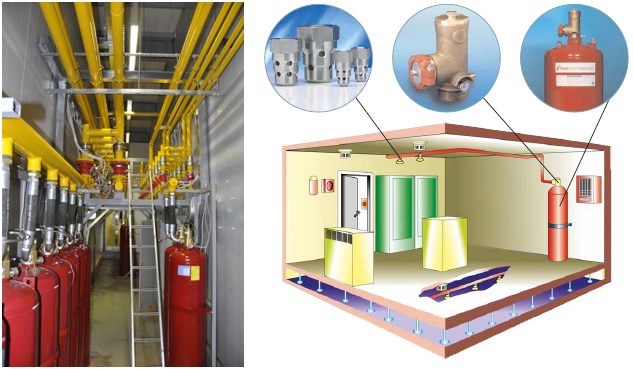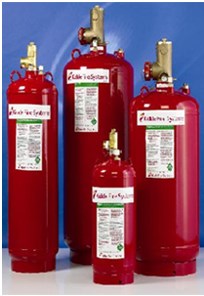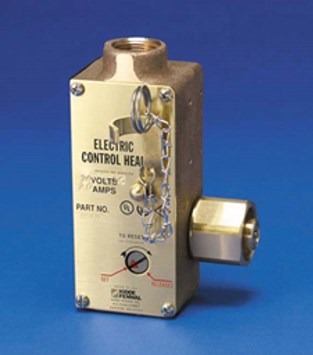"Dry water" in extinguishing fires. Dry water fire extinguishing system - features of the extinguishing agent and installation devices
In addition to the three well-known states of ordinary water, there is one more - this is "dry water". This mixture represents microscopic drops of moisture in a shell, the main substance of which is silicon dioxide. It is thanks to him that water molecules do not combine with each other and it does not spread. Outwardly, "dry water" looks like a powder.
Features of the composition and quality of "dry water"
If you decompose Novec 1230 into molecules, you will notice that there is no hydrogen in its composition, which leads to a weakening of the bonds between the molecules. Novec 1230 features more low temperature freezing - it is -108 ° C and the lowest boiling point is only 49 ° C. "Dry water" does not conduct current and does not dissolve such familiar substances as sugar and salt. At the same time, just like ordinary water, it has no smell or color.
Main areas of application of Novec 1230
On this moment"Dry water" is used to extinguish fires, and in this direction it is much more effective than ordinary water due to its characteristics. Novec 1230 will not spoil documents, books and things, including equipment, since in the process of extinguishing a fire, it is converted into steam, which then settles on the surrounding surfaces and gradually evaporates, which takes only a few seconds. It is impossible to "wet" even the thinnest paper with such water, and such qualities can be called invaluable for extinguishing fires in institutions intended for the storage of historical values, as well as in those enterprises whose work is associated with expensive equipment and high voltage.
The direct process of extinguishing fires using "dry water" is not carried out in the same way as in the traditional version. Novec 1230, entering into a combustion reaction, promotes active absorption, while ordinary water only lowers the temperature and during evaporation prevents the interaction of fire and oxygen - thus, the flame is extinguished quickly and efficiently, while the concentration of the composition required for this purpose does not pose a danger to human health ...
Another advantage of this composition is the absence of a decrease in oxygen concentration in an enclosed space, which significantly increases the time required to save people. For example, employees of the same museums can safely evacuate from the premises without fear that their respiratory or vision organs will be harmed in any way, and without worrying about the need to save property of historical value from damage.
Under atmospheric conditions, the disintegration of "dry water" is carried out in terms of 3 to 5 days, subject to exposure to ultraviolet rays. In this case, the decay products do not have negative impact on the ozone layer. It does not pose a danger to people either, however, it is still not recommended to use it inside.
Fire extinguishing is not the only area in which Novec 1230 can be used. Ten years ago, scientists discovered that such a composition is capable of absorbing carbon dioxide very actively. The latter is one of the greenhouse gases, which means it contributes to the destruction of the ozone layer. Through experiments, it was possible to determine that over the same time, "dry water" is able to absorb much more carbon dioxide than water, which makes it possible to reduce the concentration of greenhouse gases in the atmosphere to the same extent.
Prospects for use
A similar technology can be used for the manufacture of powder emulsions, which simultaneously include several liquids that are not miscible with each other. With the help of such emulsions, it is possible to ensure the safety of transportation of liquids that pose a certain danger.
Today, experts are also considering the hypothesis that the ability to absorb gases can be of significant assistance in the production of frozen methane, which is located in the depths of the oceans.
In addition, scientists are trying to find the most suitable way in order to use Novec 1230 to make fuel storage safer for Vehicle operating on hydrogen.
Article sent by: Kazachok
Novec 1230 ("dry water") is one of the latest innovations in the field of fire extinguishing. This gaseous extinguishing agent has a number of advantages over existing traditional means extinguishing fires for the safety of people and valuables, electrical equipment, museum exhibits.
How the systems work gas fire extinguishing using Novek 1230 is based on cooling with heat removal from the fire source.
What is the substance Novec 1230
Novec 1230 is a colorless and odorless liquid, belongs to the category of fluoridectones, called "dry water". Such a fire extinguishing agent is the development of an American chemical company.
This substance boils at a temperature of 49 ° C, absorbing heat from the area of the fire. This property is indispensable at the initial stage of a fire, even the minimum concentration of gas in the environment makes it possible to instantly remove heat.
In the structure of the molecule of this extinguishing agent there is no hydrogen, and therefore Novek 1230 has a number of unique characteristics (zero electrical conductivity, boiling point + 49 ° C, no wetting of substances and materials), thanks to which it is possible to effectively fight a fire.
This extinguishing agent does not conduct electricity, i.e. it is a dielectric.
Advantages of Novec 1230 gas extinguishing agent
The advantages of gas Novek 1230 include:
- 100% safe for people. This gas is completely non-toxic, and the release of this gaseous extinguishing agent does not reduce the oxygen concentration in the atmosphere.
- Ensuring the safety of valuables, books, works of art after using "dry water".
- Lightning-fast fire elimination.
- Security for the environment... This extinguishing agent does not deplete the ozone layer.
- Simplicity of installation and subsequent operation.
This substance does not cause corrosion of metal surfaces, it evaporates with lightning speed. Novec 1230 has high efficiency extinguishing a fire, the time required to extinguish the fire does not exceed 10–20 seconds. Such advantageous features ensure the use of gas extinguishing agent Novek 1230 in gas fire extinguishing installations.
Systems using Novec 1230 extinguishing agent are economical and practical. Due to the fact that fire extinguishing is possible with a low concentration of this gas, it is not necessary to equip installations a large number of cylinders, which in turn simplifies the installation procedure, the use of modules and nozzles for spraying.
Areas of application of these installations:
- server rooms;
- rooms with electrical equipment;
- museums;
- archive rooms;
- libraries;
- laboratories.
Arrangement of gas fire extinguishing systems
In gas fire extinguishing installations, Novek 1230 is placed in special cylinders, if the installation is triggered in the event of a fire, the gas moves through the pipelines and through special nozzles is released into the room. Plants with a gas extinguishing agent include several modules. Components installations:
- cylinders (with gas extinguishing agent Novek 1230, injected in liquid form);
- locking and starting device (regulates gas release);
- pipelines through which the extinguishing agent is supplied to the place of fire;
- sleeves (elements for connecting cylinders to pipelines);
- system fire alarm, which includes temperature sensors, smoke and combustion detectors;
- equipment that controls the pressure of the extinguishing agent.
The locking and starting device is designed to release the Novek 1230 fire extinguishing agent for 10 seconds. Plants with a gas extinguishing agent are used in rooms with mass stay people, safety for people is confirmed by numerous tests carried out. These settings are included even if people are working in the rooms.
Gas fire extinguishing installations using Novec 1230 as an extinguishing agent are effective, reliable and universal way deal with fire in a minimum amount of time.
A relatively new substance, developed in 2011 by the ZM company, has unique technical and performance characteristics... The official name is Novec 1230, but it is known worldwide as "dry water".
The absence of hydrogen in the structure of the fluorinated ketone molecule endowed the substance with special properties that are successfully used to eliminate fires:
- Zero electrical conductivity;
- Boiling point + 49 ° С;
- Substances and materials do not get wet.
Fire extinguishing systems use gas obtained from a fine atomization. Upon transition to gaseous state, Novec 1230 rapidly reduces the temperature in the room, dropping it below the combustion point. At the same time, neither people nor equipment connected to electricity and material values are damaged.
The substance is absolutely safe for human health and environmentally friendly. But, despite the common name - "dry water" inside it is better not to use it.
More details about the properties of dry water can be seen in the video of the presentation of the manufacturer's company:
Application area
Dry water is most widespread in the west in systems automatic fire extinguishing installed in premises with fragile art values: museums, art galleries; libraries and archives. It is recommended to use Novec 1230 in data centers, laboratories that work with liquid flammable substances and are equipped with fragile electronic equipment. Proof that dry water fire fighting is effective and safe is the removal of all restrictions on its use in the United States and the use of dry water in automatic installations extinguishing ships, aircraft and armored vehicles.
Currently, the most common substances of this type are 3M ™ Novec ™ 1230 and Fluoroketone C-6. Both substances have almost identical performance characteristics and are classified as freons.
The extinguishing agent is certified for use in the process of extinguishing fires of category A and B. Studies are being carried out to confirm admission to extinguishing combustible gases - class C.
Quenching with dry water is based on the principle of temperature reduction (70% of the effect of the substance) and inhibition chemical reaction combustion process (30% extinguishing effect).
Advantages
High efficiency - the source of ignition is neutralized thanks to high level volatility, for 10-15 seconds;
Human safety confirmed by clinical trials. The unit can be switched on when there are still people in the room.
Ease of use - dry water can be used as a fire extinguishing agent in already installed equipment with minimal modernization. In addition, damage to dry water cylinders and even a spill will not cause unpleasant consequences. The "water" will simply evaporate without leaving a trace.
Environmental safety - the decomposition of the substance occurs in 3-5 days, without damaging the ozone layer.
Fire extinguishing system device

The dry water fire extinguishing system consists of:


More details about the system elements, their placement and the principle of operation can be found in the introductory video of the manufacturer's company:
Considering the high efficiency demonstrated by dry water (fire extinguishing of a class A fire source takes only 10 seconds), the dimensions of the installation required for monitoring the premises are much more compact, and the number of cylinders is much smaller. In addition, much smaller values are required for the pipeline. technical requirements... Working pressure of only 25bar, instead of required for gas system 250 - 300bar. This greatly simplifies and reduces the cost of both installation and further maintenance.






